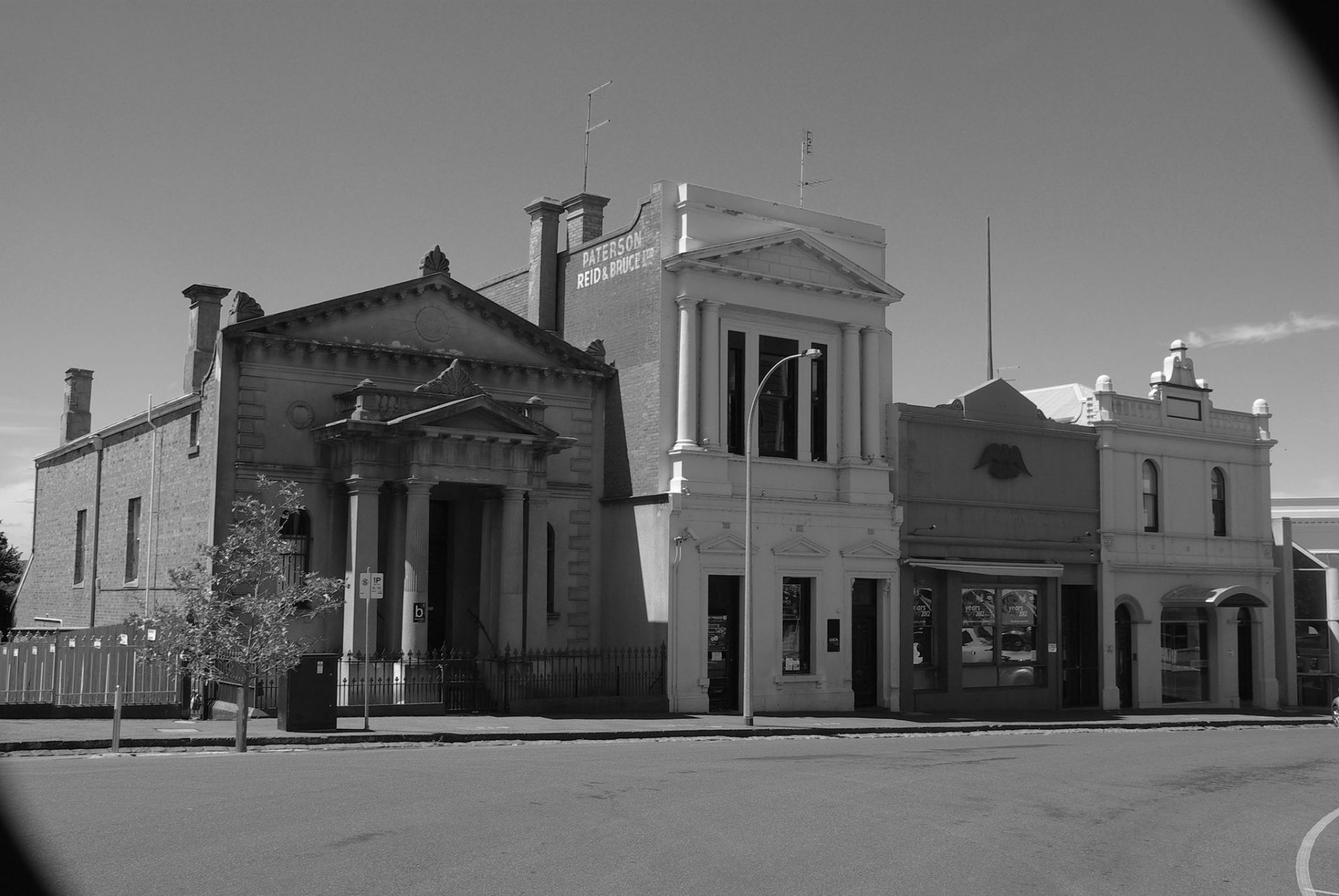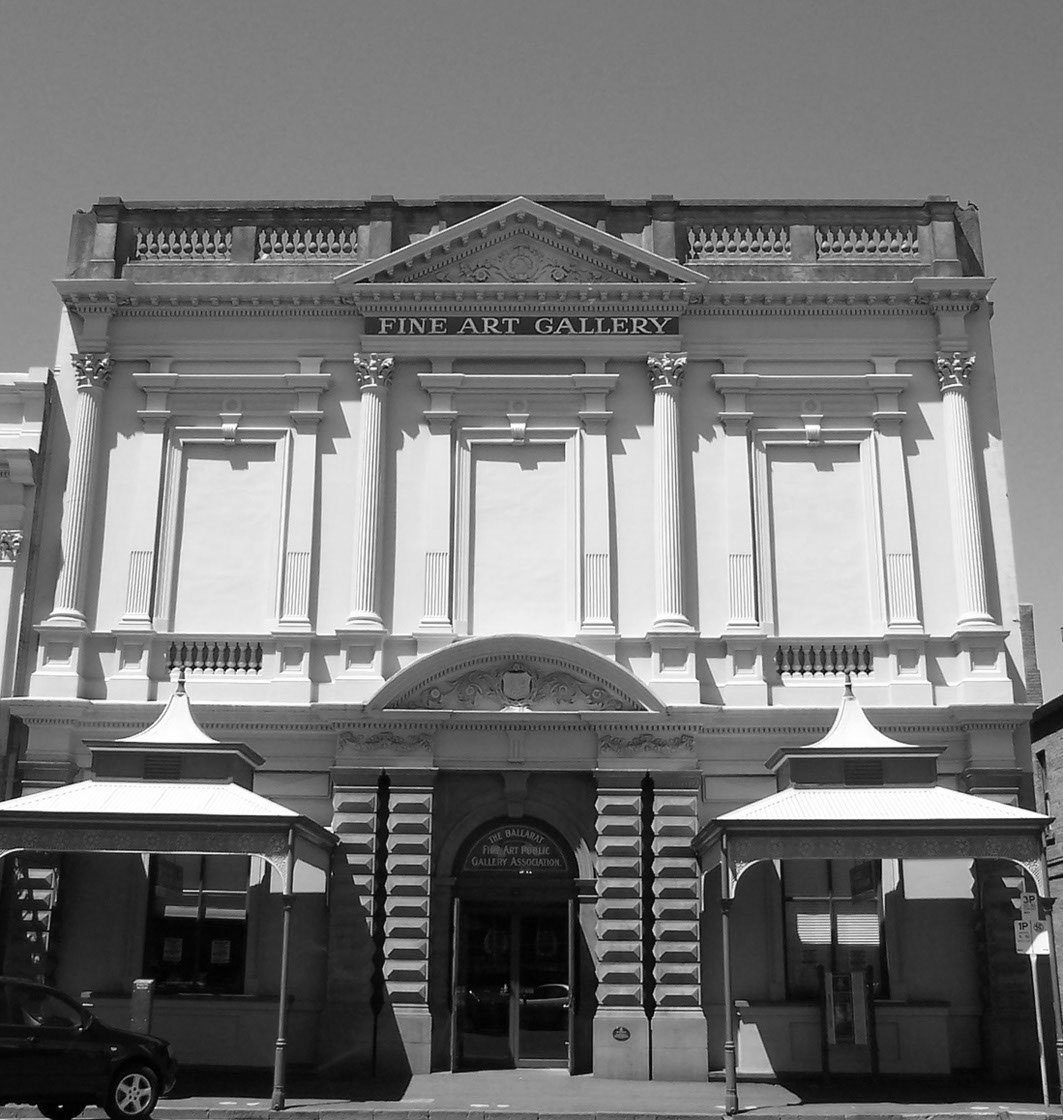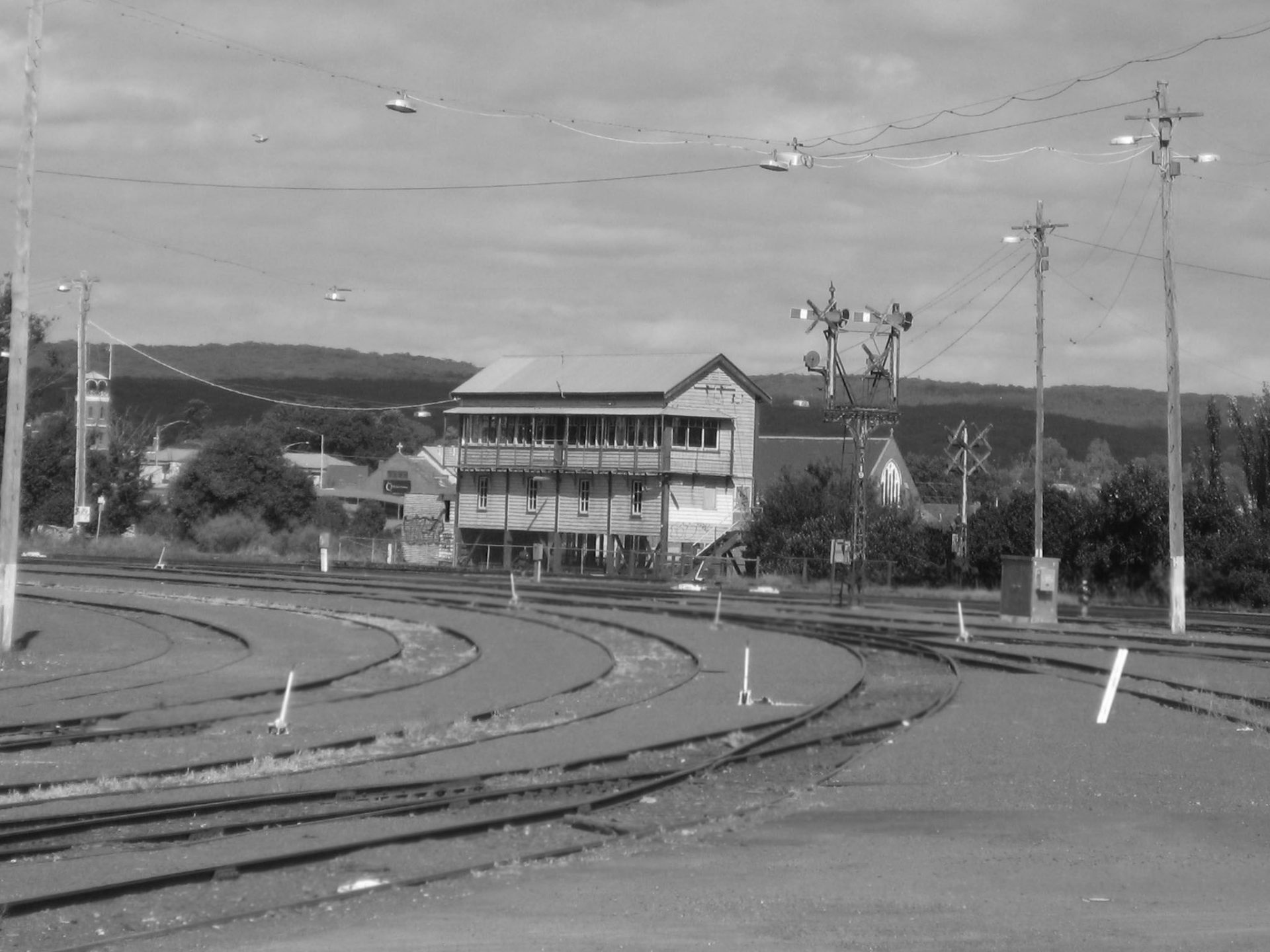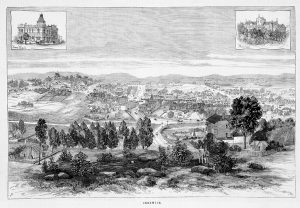Creswick Hospital: A Caring Community
Dorothy Wickham
“I saw my mother taken away to hospital. I never saw her alive after. I did not think I was clean enough to see her.”
Mary Griffin the mother of John Griffin had been taken away to the Creswick Hospital in a dray. She was lying in her tent for two days after she had been burned while “bringing in a lot of wood burning in a bucket to warm the tent” . Her neighbour, Louisa Barnes, described “the smell in the tent” as “fearfull” [sic] and Mary “in a filthy condition”. Mary died in the Creswick Hospital on 1 September 1864 from “exhaustion and shock to the system caused by having been accidentally burnt” two weeks previously.
The hospital had been formally opened on 11 December 1863. There were doctors in the area from the time of first goldrush to Creswick’s Creek in 1852. The earliest doctors practised in tents or the local hotel. In 1859 an advertisement was placed in the local newspaper “To Medical Men of Creswick”. The medical men of Creswick were requested to attend a meeting at the Prince of Wales Hotel for the “purpose of trying to purify the profession in the neighborhood from illegal and disreputable practitioners and also to adopt a regular scale of fees.” The need was evident for qualified medical practitioners and for a hospital in the area. The five acres which comprised the Creswick Hospital Reserve were gazetted on 11 June 1860. Mr Poeppel designed the new hospital, an imposing and impressive structure, and Mr Bacon was the builder. The foundation stone was laid by C.C. Downing, the police magistrate on 20 February 1863 and on 27 October 1863 A Lewers was elected the first President and Treasurer of the Hospital, Thomas Cooper and John Roycroft being Vice-Presidents. The first committee meeting was held on 10 November 1863. Dr Anthony George Hayden Starke was appointed Resident Medical Officer of the Creswick Hospital on 1 December 1863. The first patient was admitted on 12 December 1863. He was Hugh Cushing, an Irishman, who had been working at the “Sons Of Justice” mine at Bald Hills when “laceration of toes by machinery” had occured. By Christmas Day the hospital had admitted five patients, three being the result of accidents.
Of the first fifty patients at the Creswick Hospital only ten were women. In 1862 Rule number 11 at the Ballarat Hospital stated “No pregnant female, for the purpose of confinement, no child under five years of age, no insane person, no person afflicted with syphilis, or any infectious disease, or suffering from chronic paralysis, or any person who, in the opinion of one of the medical or surgical officers and resident surgeon, or house committee, is unsuitable to be admitted, shall be received as an inpatient under any circumstances….” A similar rule applied at Creswick Hospital. Judged “unfit for hospital patient” was unfortunate Elizabeth Davidson, aged thirty-seven years, who was admitted to the hospital on 16 July 1864 suffering from partial hemiplegia on the right side. (Hemiplegia means paralysis and most probably she had suffered a stroke.) She was living at Diamond Gully, married, of Wesleyan faith, born in England and had been in the colony for twenty years. She was “relieved” and discharged on 23 July 1864. Another patient considered “not a fit case for hospital” was Charles Benny from Clunes, who was admitted on 22 February 1868 with “cerebral irritation”. The term “cerebral irritation” was used to describe anything from a brain disorder to an infection causing incoherent behaviour! James Millrick aged twenty-eight years from Bullarook was admitted on 4 June 1868 with “exhaustion” and was relieved and on the 24 June 1868, discharged and “handed over to police”. Agnes Turner, who was diagnosed on 5 August 1868 with “hepatic tumour” was “sent to Ararat Asylum” on 11 August 1868. She was married, aged thirty-six years and had been in Victoria for thirteen years. This poor woman had a tumour on the liver and unfortunately was raving and considered a maniac and therefore sent to the mental asylum. There was often no other treatment.
Many of the entries in the hopital register bear witness to the demanding and often hazardous lifestyle of the miners and early pioneers in the district. James Perinoni, aged nineteen years, Swiss, was admitted on 14 March 1864 with both bones in his right leg fractured. He was working for the Pholian Company of Spring Hill. He spent four months in hospital. Alexander Stevenson, on the other hand, “fell down a hole 24ft” and only sustained a “lacerated wound of the hand”. He was admitted on the 6 June 1864 and discharged on 22 June 1864. Henry Burke of Tourello was not so lucky. Henry Rogers stated that Burke was “on the thrashing machine- we were engaged thrashing wheat” when he accidentally fell into the drum. The accident happened “about five o’clock” on Monday night 24 February 1869 and although he was “conveyed at once to the Creswick Hospital ” he arrived there “at near nine o’clock”. “The distance from Tourello to Creswick is about ten miles.” He “had his leg seemingly smashed to pieces.” On examination Dr Starke said ” I found his right leg torn to pieces. …… It was deemed necessary to take off the leg. He recovered the operation but sank and died the same night about twelve o’clock.” David Smith died at the Creswick Hospital on the 12 November 1868 from a fracture of the spine caused by a branch of a tree falling on him while at work in Bullarook on the 31 October 1868. At the inquest James Smith said, ” I am the son of the deceased David Smith. Deceased was the son of David and Margaret Smith born in Lanarkshire, Scotland aged forty-seven years. Married in Glasgow, Scotland at twenty-four years of age to Elizabeth Brown. Deceased had been sixteen years in Victoria and by trade a sawyer and had had nine children. viz David 22 years, James 20 years, Margaret 17 years, Thomas 15 years, William 13 years, Daniel dead, Malcolm 7 years, John 4 years, Robert 2 years. I know nothing of the accident but from what I have heard. After the accident happened Dr Trotter was got at once and by his advice deceased was at once sent to the Creswick Hospital. Deceased told me the accident happened to him after he had felled a tree at Dean on the thirty first day of October last and that he believed a branch from a neighbouring tree fell on him causing a severe injury to his back. There were three others working with the deceased when the accident took place. Deceased did not blame anyone of carelessness. Deceased was a man of temperate habits. I last saw him alive on Wednesday last. He was then only partially sensible. I heard that he died at the Creswick Hospital on Thursday night last at six o’clock pm.” There were many reports of such accidents and it is clear that due to the severity of the injuries and the difficulty in transporting patients from the outlying districts to the hospital that mortality in these cases was high.
According to the tenth annual report of the Central Board of Health 1864-65 ” the general health of the Creswick district throughout the past twelve months has been good. … Privy cesspits have, in a few instances, been improved in construction, but they are still usually but mere holes in the ground; … The cesspit attached to the Hospital here is at present in foul state from being full and overflowing. … The Hospital, which had been but recently erected at time of my former visit, was opened in December last; it has since received 115 in-door and 458 out-door patients. The committee propose extending the accommodation as early as possible, the present building being insufficent to meet the wants of the district. The present number of patients in the Hospital is 13 males and 5 females, most of the former are from mining and agricultural accidents.
Ventilation of the wards is found to be defective. Privy accommodation is also unsatisfactory, the only conveniences being two waterclosets which form part of the entire building. As however, these matters are engaging attention of the committee, it is unnecessary to further comment on these defects.” The hospital had various smaller wards, the two main public wards being on either side of the main entrance, with the resident medical officer occupying the rooms above. Additions and alterations were made in 1867 and 1868 and water laid on in 1869.
The list of contributors in 1868 to aid the hospital, reveals a high percentage of Chinese names. (This was a form of health insurance!) Recommenders were allowed up to two patients each in the hospital at any one time. There “were about three hundred Chinese on the encampment on the Black Lead, north west of the town ” in 1864 with “various piggeries close to the tents” , which by 1868 had been removed “to a suitable distance therefrom” . Many of the Chinese suffered starvation, and diseases such as leprosy were prevalent. In 1867 Dr Robert Lindsay, describing An Chung on 28 April 1867 wrote, “There was scarcely any flesh on the body of the deceased. He was so much emaciated. I believe deceased had suffered from syphilitic disease of the worst type which owing to want of medical treatment and proper nourishment was the cause of death.” Ah Mow described the deceased as “very poor” and “several of the Chinese with myself used to support him.” “I never knew what was the matter… but … the Chinese said he had leprosy.” At the inquest of Ah Pack on 13 April 1868 the Coroner found he also died from STARVATION and want of medical attendance. He was severely afflicted with leprosy, “principally on the face and right leg. ….The stomach was empty. ” Dr Heron Steel also stated ” I found no fat whatever inside the body. … I believe the actual cause of death was starvation but deceased suffered from leprosy. I have seen leprosy in Chinese before. … I believe deceased would have died from leprosy.”
The Chinese were not alone in suffering from starvation. Many a miner “down on his luck” found it difficult to feed himself and impossible to feed a family. There were many reports of patients suffering exhaustion and being “brought in by the police.”
Among the most poignant cases was that of Jane Cramrel? who died from “defective assimilation”. She had been in the colony only eleven weeks. Many of the diseases listed were described inadequately as in the above case. We suspect that “defective assimilation” was melancholia and that Jane died longing for her homeland. However, what was morbis cordis or mortification? If you were suffering from mortification you were not embarrassed, but had gangrene! Colonial fever was not some new form of influenza but typhus, spread by head lice and was a putrid foul-smelling disease prevalent on many of the immigrant vessels and occuring in epidemics. Diphtheria, not common today, was another deadly disease in the days before antibiotic treatment. The first case of diphtheria to be admitted to the Creswick Hospital was on 18 June 1864. John Northby of Spring Hill, a Lutheran, aged seven years was admitted and happily cured and discharged on 3 July 1864.
The need for a hospital at Creswick is clearly evident. The number of patients steadily increased and the hospital gained a well-earned reputation throughout the community. Dr Starke, the first resident medical officer was to stay for eight years. Dr Robert Charles Lindsay often acted as medical officer. Dr J. Tremearne was appointed resident medical officer in 1872 after a short stay by Dr T. H. Webb. The high standard of care given by the Creswick Hospital reflects admirably upon the dedication of the staff and doctors and indeed the whole Creswick community.
Image (above right): Creswick, David Syme & Co, 1882, State Library of Victoria. Accession no: IAN05/08/82/117
DISCLAIMER: The information contained on this site was researched using the information that was available at the time. It is therefore subject to future amendments should more information become available in the future.
The Inpatient’s Registers for the Creswick Hospital 1863-1883 have been transcribed by Dorothy Wickham and Roy Huggins. Send the name you are searching for a free look up.








